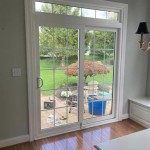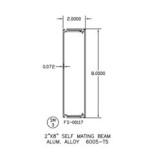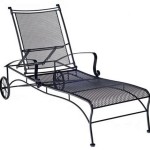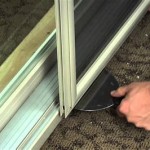How To Fix a Broken Patio Door Lock Mechanism
A malfunctioning patio door lock can be a security risk and a general inconvenience. Fortunately, many common problems can be resolved without professional assistance. This guide provides step-by-step instructions for diagnosing and fixing common patio door lock issues.
Identifying the Problem
Before attempting any repairs, it is crucial to pinpoint the exact issue. This accurate diagnosis will guide the repair process and prevent unnecessary work.
- Check the Handle: Is the handle loose, stiff, or completely detached? A loose handle often indicates a stripped screw or a broken internal component.
- Examine the Lock Cylinder: Does the key turn smoothly? Difficulty turning the key may signify a jammed or worn-out lock cylinder.
- Inspect the Latch Bolt: Does the latch bolt extend and retract fully? A misaligned or damaged latch bolt can prevent the door from locking properly.
- Test the Deadbolt (if applicable): Does the deadbolt engage and disengage smoothly? Issues with the deadbolt can indicate internal mechanism problems or a faulty lock.
- Observe the Door Alignment: Does the door fit snugly within the frame? A misaligned door can put stress on the lock mechanism, leading to malfunctions.
Gathering the Necessary Tools
Having the correct tools on hand will streamline the repair process and prevent delays.
- Screwdriver Set: A variety of sizes and types (Phillips and flathead) is essential for removing and tightening screws.
- Pliers: Useful for gripping and manipulating small parts.
- Hammer: May be needed for tapping parts into place (use with caution).
- Lubricant: A silicone-based lubricant or graphite spray can help loosen stiff mechanisms.
- Replacement Parts (if needed): Once the problem is identified, purchase the appropriate replacement parts (e.g., latch bolt, lock cylinder, handle set).
Tightening Loose Screws
Loose screws are a common cause of handle wobble and other issues. Addressing this is often a simple fix.
- Identify Loose Screws: Carefully inspect the handle, faceplate, and strike plate for any loose screws.
- Tighten the Screws: Use the appropriate screwdriver to tighten the loose screws. Be careful not to overtighten, which could strip the screw holes.
- Replace Stripped Screws: If a screw is stripped, replace it with a slightly larger screw or use a wood filler to repair the hole before inserting a new screw.
Lubricating the Mechanism
A dry or sticky lock mechanism can hinder proper function. Lubrication can often resolve this.
- Apply Lubricant: Spray a silicone-based lubricant or apply graphite powder to the moving parts of the lock mechanism, including the latch bolt, deadbolt, and keyway.
- Work the Mechanism: Operate the handle and lock several times to distribute the lubricant evenly.
- Wipe Away Excess: Remove any excess lubricant with a clean cloth.
Replacing a Damaged Lock Cylinder
If the key won't turn or the lock cylinder feels jammed, it might require replacement.
- Remove the Handle Set: Unscrew the handle set from the door, following the manufacturer's instructions.
- Remove the Lock Cylinder: Locate the retaining screw or clip that holds the lock cylinder in place and remove it. The cylinder should then slide out.
- Install the New Lock Cylinder: Insert the new lock cylinder, ensuring it aligns correctly with the keyway. Secure it with the retaining screw or clip.
- Reinstall the Handle Set: Reattach the handle set and test the functionality of the new lock cylinder.
Replacing a Faulty Latch Bolt
A damaged or misaligned latch bolt can prevent the door from latching securely.
- Remove the Handle Set: Remove the handle set as described in the previous section.
- Remove the Latch Bolt: The latch bolt is typically held in place by screws or clips. Remove these fasteners and carefully slide the latch bolt out of the door edge.
- Install the New Latch Bolt: Insert the new latch bolt, ensuring it is properly aligned, and secure it with the appropriate fasteners.
- Reinstall the Handle Set: Reattach the handle set and test the functionality of the new latch bolt.
Addressing Door Alignment Issues
A misaligned door can strain the lock mechanism. Adjusting the door's position can often alleviate this strain.
- Check the Hinges: Inspect the hinges for loose screws or damage. Tighten any loose screws or replace damaged hinges.
- Adjust the Strike Plate: If the latch bolt does not align with the strike plate, loosen the strike plate screws and adjust its position as needed. You may need to chisel or file the mortise in the door frame to accommodate the adjusted strike plate.
- Check for Warping: If the door is warped, professional assistance may be needed to repair or replace the door.
By following these steps, many common patio door lock problems can be resolved. However, if the issue persists or if you are uncomfortable working with the lock mechanism, it's always best to consult a qualified locksmith or door repair specialist.

How To Replace A Sliding Glass Door Latch Patio Replacement Won T Lock
Glass Door Latch Replacement Ifixit Repair Guide

Fix A Sliding Glass Door That Won T Lock Or Latch Easy

My Patio Door Won T Lock What Do I Checkatrade

How To Replace Sliding Patio Door Lock Remove And Install

How To Replace Sliding Door Lock Handle Easy Simple Latch
Glass Door Latch Replacement Ifixit Repair Guide
Patio Door Lock Repair Diy Home Improvement Forum

Broken Aw Sliding Glass Door Lock Latch Swisco Com

Fixing A Locked Shut Patio Door Getting It Open Repairing The Lock
Related Posts








